by Don Basile | Dec 27, 2015 | Tech
With the Apple watch already outselling all of its competitors in less than a year on the market, smartwatches are here to stay, in part because as consumers, we’ve grown accustomed to accessing a range of personal health metrics on our wrists. While tracking daily steps or sleep cycles can lead to improved individual health, fitness trackers are only the first wave of wearable tech devices aimed at transforming healthcare. The wearables market is expected to swell to more than 160 million units shipped in 2020, and among the rising tide we can expect to see wearables aimed at aiding healthcare professionals as much as the individuals who wear them. Here are five exciting wearables poised to revolutionize healthcare:
1. Wearable Health Patches
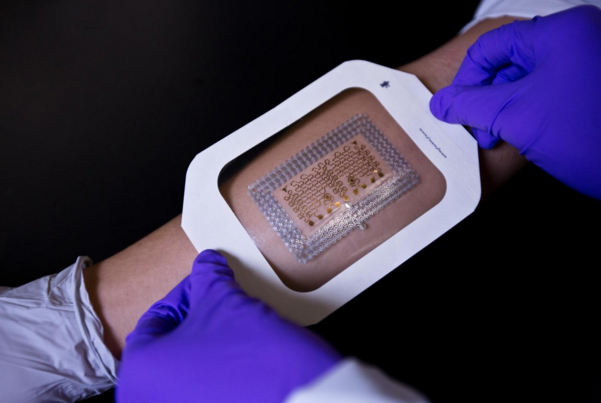
Ultra thin wearables that adhere to the skin like tattoos to monitor vital signs might sound like science fiction, but they’ve been around for a few years now. Until recently, the trackers were prohibitively expensive and time consuming to make. But researchers at the University of Texas have developed a “cut and paste” method for affordably producing these trackers in just 20 minutes. The process involves cutting pieces of metal on polymer adhesives and printing electronics onto the adhesives. While these patches aren’t yet widespread in healthcare settings, this latest breakthrough could make them more readily available as a way for doctors to track patient vital signs, heart rate, muscle movement, and more.
2. Google Glass

While the consumer version of Google Glass was an epic fail, its reincarnation as a potentially life-saving tool in the emergency room is exploring exciting new territory for the computerized lenses. Hospitals across the country are adopting the technology in myriad ways, from livestreaming operations for teaching and training purposes, to using voice commands to aid surgery. Having a virtual pair of eyes in the OR allows doctors to collaborate, remotely monitor residents, and access patient data more readily. Glass also offers a pay-it-forward benefit for healthcare. For instance, last year Dr. Selene Parekh at Duke Medical Center livestreamed an ankle replacement surgery to thousands of doctors in India, where medical practices lag years behind the United States. Once the hardware and software is tailored specifically for medical applications—privacy issues are still a roadblock—we can expect to see Glass as often as the stethoscope.
3. UNICEF Kid Power
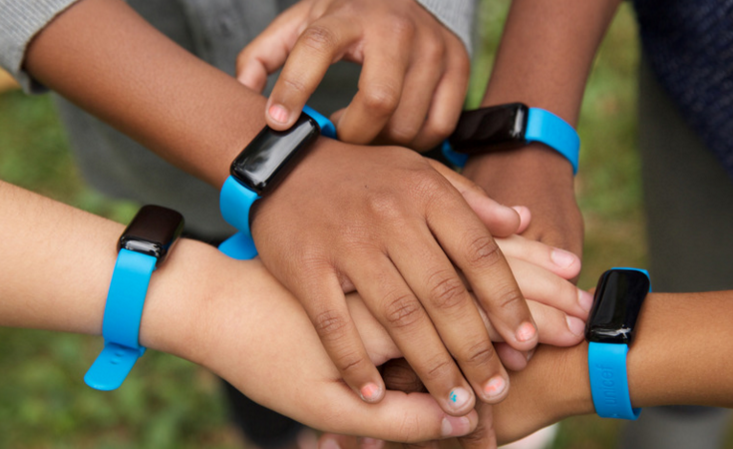
The recent partnership between UNICEF and Target aims to get American children moving more, while simultaneously saving the lives of malnourished children around the world. Every purchase of the $39.99 fitness band from Target will initiate a $10 donation to UNICEF. The fitness tracker and accompanying app is structured like a game, encouraging kids to reach fitness goals while learning about other cultures. Users can “unlock” therapeutic food packets that UNICEF then delivers to malnourished children in developing countries.
4. Smart Contact Lenses

Google’s passion for bringing tech to eyes doesn’t stop with Glass. Google X is partnering with swiss drugmaker Novartis on an ambitious project that aims to restore the eye’s autofocus abilities through a smart contact lens. Sensors in the lens could track health metrics through the user’s glucose levels in their tears. In addition to correcting age-related long sightedness, a version of these smart lenses could be a breakthrough tool for diabetics to track their blood sugar levels. Prototypes are on track for human testing by 2016.
5. Empatica Embrace

Developed by scientist and MIT professor Rosalind Pickard, the Embrace is a wearable health tracker designed specifically for people who suffer epileptic seizures. In addition to tracking physiological stress, sleep and activity, the sensors can detect oncoming seizures and automatically inform a caregiver. This is a game changer for treating epilepsy, and potentially other diseases, including Alzheimer’s and Parkinson’s, where data collection is key to finding new treatments.
A Healthier Future
From smart “tattoos” to contact lenses to wristbands that track potentially lifesaving data, the healthcare industry is undergoing a digital Renaissance thanks to nanotechnology and wearables. It’s exciting to live in a world where technology and healthcare are merging to provide care solutions and potentially even cures to illnesses that have plagued humans for millennia.
* This article was originally published on The Next Web. Check out my author page here.

by Don Basile | Oct 10, 2015 | Sports, Tech
With projections on wearable tech becoming a $75 billion dollar industry by 2025, the largest sector ripe for cashing in on the wearable craze is healthcare. From fitness to medicine to wellness, the capacities for tracking metrics and translating them into goal-oriented wearables that are swiftly finding increasing demand among consumers is practically infinite. While there’s an obvious market for devices like the Jawbone Up and Apple Watch, there’s a growing number of wearable devices coming to market that encourage users not to do more, but to do less.
According to the most recent survey on stress conducted by the American Psychological Association, Americans are routinely more stressed than what the association considers healthy. Polling over 3,000 adults last August, the study found that the average American considers his or her stress level a 4.9 on a 1-10 scale, with 1 being “little or no stress” and 10 being “a great deal of stress.” We should strive for a 3.7, according to the association. 42% of participants reported not doing enough to manage their stress on a daily basis. Enter the next generation of wearables, aimed at helping users find calm amidst the chaos of modern life.
1. Spire
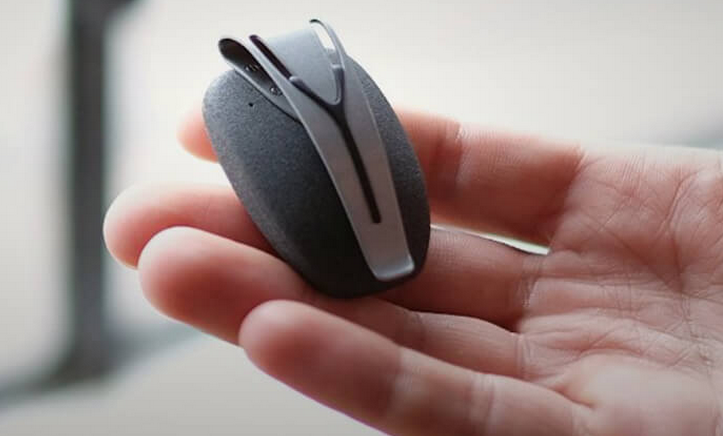
Designed by Stanford University’s Calming Technologies Lab, Spire is a smooth stone that clips to your belt or bra, measuring breathing patterns and counting steps taken throughout the day to pinpoint your tension levels. Retailing for $149.95, Spire claims to be able to reduce your stress by 50% through embedded sensors that monitor breath pattern and sync with the app, which sends gentle reminders and notifications when your stress levels are higher than optimal. Spire has received rave reviews from users and press so far, mainly because it offers a solution to a very real problem of forgetting to breathe properly, especially when sitting for hours in front of a computer. Spire gets bonus points for its sleek design. In a sea of chunky bracelets, this smooth stone with a simple wishbone clip stands out as something you’d actually want to show off.
2. Being

Being, the mindfulness tracker from Zensorium, is a different spin on the same concept. Being, available for preorder for $199, claims to be able to differentiate good stress from bad, while tracking heart rate, blood pressure, and sleep cycles. What’s interesting about this one is its attempt to map a user’s emotions through heart rate variability (these four emotions—stressed, excited, normal and calm—are pretty basic, though). Like Spire, Being offers deep breathing exercises when stress levels spike. Unlike Spire, Being has a bulky watch face that many won’t find comfortable to wear 24/7.
3. WellBe
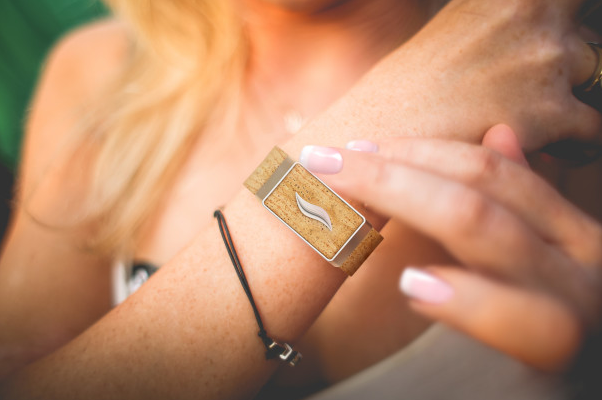
Recognizing that stress is usually triggered by external factors, WellBe monitors heart rate levels and then matches them, through a patent pending algorithm, to specific moments and interactions throughout a user’s day. Available for pre-order with an expected December 2015 release date, WellBe is priced at $119. What sets this wearable apart is its eco-friendly cork composition, which makes it light and comfortable for all day wear. WellBe’s connected app is robust, offering guided meditations, positivity playlists, breathing exercises, and even a library of meditation mentoring programs that can be used for ongoing life coaching.
4. SmartMat

It was only a matter of time before yoga mats went high tech. SmartMat is a responsive mat embedded with 21,000 sensors to detect your body’s balance, pressure and alignment. This data is then sent via bluetooth to a connected app that runs on iOS and Android. SmartMat requires a first time calibration process where the mat gets to know your individual body. Three settings allow users to choose between a voice guided practice for real time posture corrections, a headphone connected option for in-class use, or “Zen Mode,” which tracks silently for post-class review. There’s also a bunch of classes in the SmartMat marketplace. Made of eco-friendly PVC and disguised as a regular yoga mat, this one’s sure to be a hit with the namaste crowd looking to turn their practice inward. Pre-orders start at $297.
5. Prana
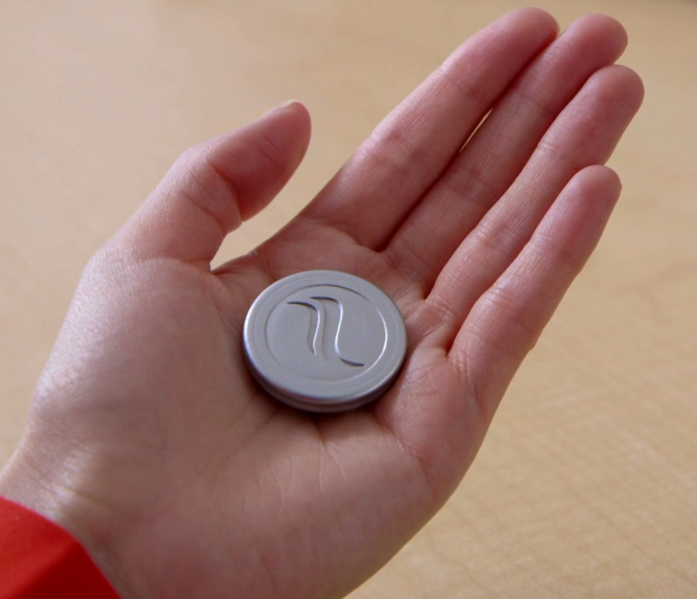
Calling itself the world’s most advanced breath and posture tracker, Prana is another yogi-inspired wearable intended to encourage better habits over time. Featuring a waistband clip that lies flat when wearing, Prana’s unique angle is to turn the mundane task of improving posture and breathing into “gamified breathing,” with two minute games where you try to match your breathing to a field of flowers or a bird’s flight. Using bluetooth to transfer data to the Android and iOS app, Prana tracks 10 different breath and posture statistics. Backed by algorithms that can differentiate posture’s effect on breathing, as well as diaphragm vs. chest breathing, Prana collects a lot of data for a single sensor. Which begs the question, how much do we need to know about every breath we take? Prana might be best suited for those looking to address medical conditions like asthma or hypertension, but casual users might find the Spire more elegant.
The Bottom Line
Of course, you don’t need any of these devices to tell you when you’re feeling anxious, overwhelmed, or out of alignment. The human body has been sending us that data, free of charge, for millennia. But with the quantified self movement in full force, we’re sure to see more wearables capitalizing on the mindfulness sector in years to come. As these devices catch on in popularity, let’s hope to see a decline in stress levels in the American Psychological Association’s 2016 survey.
This article was originally published on The Next Web. Check out my author profile here.










